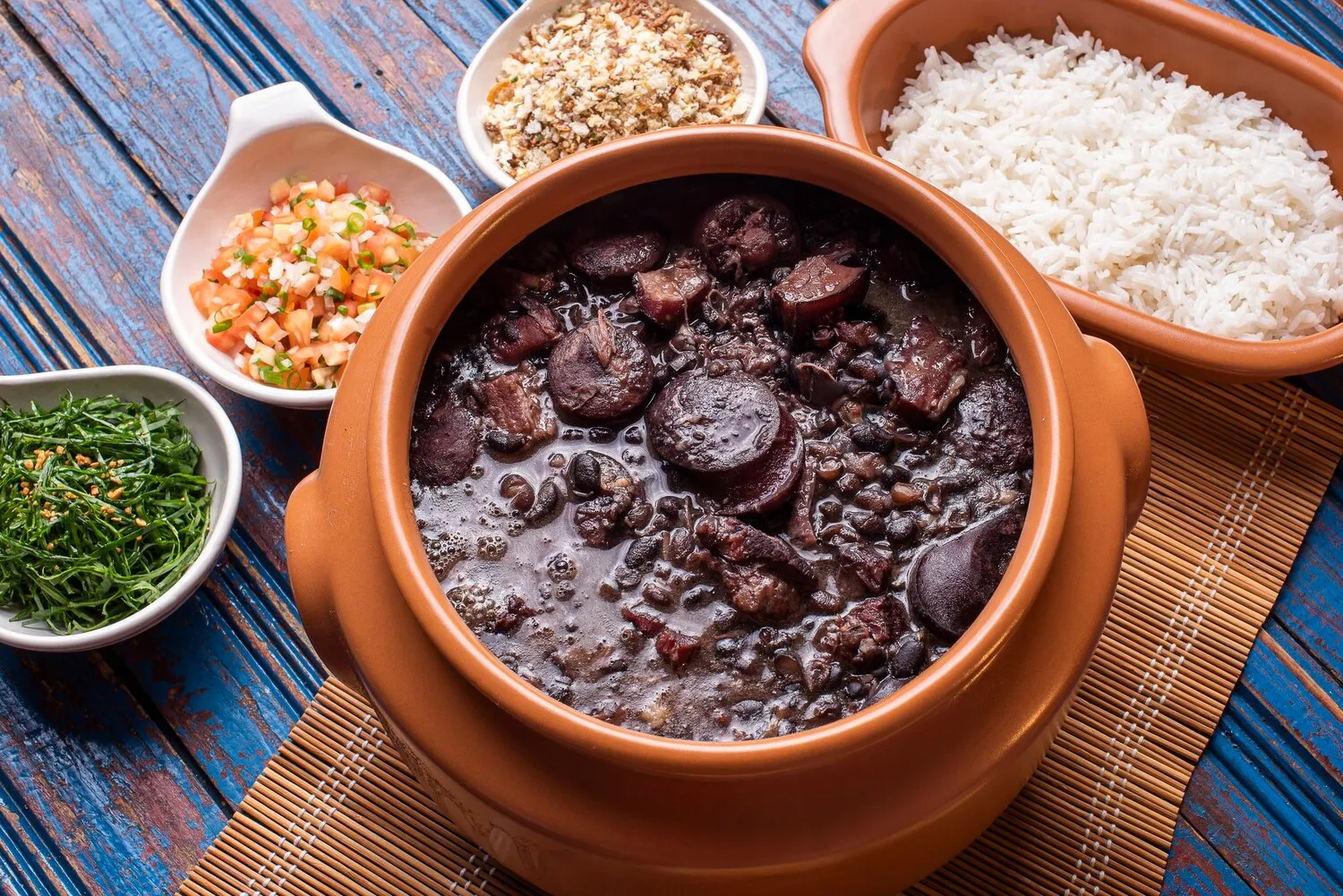
Feijoada
Brazil's national dish, a hearty black bean stew with various cuts of pork, beef, and sausage. Served with rice, collard greens, farofa (toasted cassava flour), and orange slices.
Nutrition Facts
* The % Daily Value (DV) tells you how much a nutrient in a serving of food contributes to a daily diet. 2,000 calories a day is used for general nutrition advice.
Cozinha da Mari
Feijoada's origins are debated, with popular theories suggesting it evolved from the food of enslaved Africans, who combined discarded pork parts with black beans. However, other theories propose it's a Brazilian adaptation of European stews.
Feijoada is more than just a dish; it's a symbol of Brazilian identity, community, and celebration. It's often enjoyed on weekends and special occasions, bringing people together to share a meal and celebrate Brazilian culture.
Social Gathering
Feijoada is traditionally a communal dish, shared among family and friends. Preparing and enjoying it together is a social event.
National Dish
Recognized as Brazil's national dish, Feijoada represents the country's culinary heritage and diversity.
Weekend Tradition
It's commonly eaten on Saturdays and Sundays, offering a leisurely and relaxed meal.
Regional Variations
While the core ingredients remain consistent, regional variations exist, reflecting local preferences and ingredients.
Feijoada offers a rich, savory, and smoky flavor profile, combining the earthiness of black beans with the varied tastes and textures of pork, beef, and sausage. It is traditionally served with components that offer contrasting flavors, textures, and freshness.
The dominant flavor is savory, stemming from the black beans and salted, smoked, and cured meats. The specific flavor profile varies depending on the cuts of pork and beef used (e.g., smoked ribs, sausage, dried beef, pork belly). The inclusion of orange slices provides a citrusy brightness that cuts through the richness. Collard greens add a touch of bitterness and a fresh texture, while farofa contributes a toasted, nutty, and slightly crunchy element.
Desalting the Meats
Soaking salted meats (like dried beef and salted pork) in water for 24-48 hours, changing the water frequently, is crucial to remove excess salt and prevent the Feijoada from being too salty.
Ingredient Quality
Use high-quality ingredients, especially the black beans and various cuts of pork and beef, to enhance the flavor and texture of the dish.
Layering Flavors
Adding ingredients in layers, starting with the less flavorful ones (like black beans) and gradually incorporating the more flavorful meats, allows the flavors to meld and develop during the cooking process.
Patience is Key
Feijoada requires time and patience to cook properly. Slow-cooking allows the flavors to fully develop and the meats to become tender.
Explore additional Brazilian Stew dishes and restaurants
Explore Brazilian StewDiscover top dining spots and culinary experiences in Macaé.
Explore MacaéLearn more about the food culture, restaurant scene, and culinary heritage of Brazil.
Explore Brazil